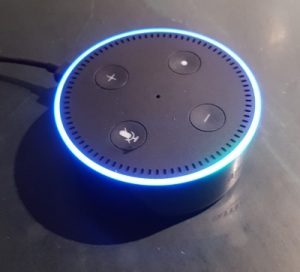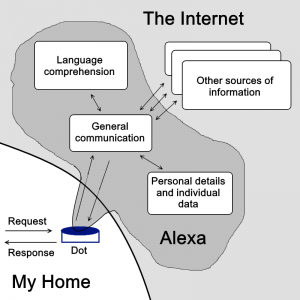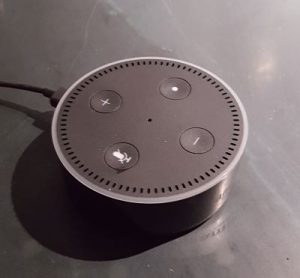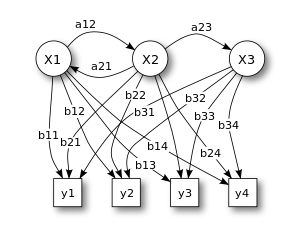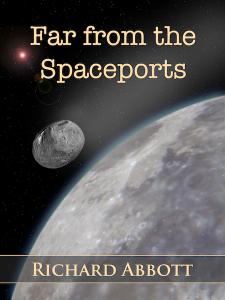
Today’s blog looks at bugs – the little things in a system that can go so very wrong. But before that – and entirely unrelated – I should mention that Half Sick of Shadows is now available in paperback form as well as Kindle. You can find the paperback at Amazon UK link, Amazon US link, and every other Amazon worldwide site you favour. So whichever format you prefer, it’s there for you.
So, bugs. In my day job I have to constantly think about what can go wrong with a system, in both small and large ways. No software developer starts out intending to write a bug – they appear, as if by magic, in systems that had been considered thoroughly planned out and implemented. This is just as true of hacking software, viruses and the like, as it is of what you might call positively motivated programs. It’s ironic really – snippets of code designed to take advantage of flaws in regular software are themselves traced and blocked because of their own flaws.

But back to the practice of QA – finding the problems and faults in a system thought to be correct. You could liken it, without too much of a stretch, to the process of writing. Authors take a situation, or a relationship, or a society, and find the unexpected weak points in it. Isaac Asimov was particularly adept at doing this in his I, Robot series of stories. At the outset he postulated three simple guidelines which all his robots had to follow – guidelines which rapidly caught on with much wider audiences as the “Three Laws of Robotics”. These three laws seemed entirely foolproof, but proved themselves to be a fertile ground for storytelling as he came up with one logical contradiction after another!
But it’s not just in coding software that bugs appear. Wagon wheels used to fall off axles, and I am told that the root cause was that the design was simply not very good. Road layouts change, and end up causing more delays than they resolve. Mugs and jugs spill drink as you try to pour, despite tens of thousands of years of practice making them. And I guess we have all come across “Friday afternoon” cars, tools, cooking pans and so on.

Bugs can be introduced in lots of places. Somebody thinks they’ve thought up a cool design, but they didn’t consider several important features. Somebody thinks they’ve adequately explained how to turn a design into a real thing, but their explanation is missing a vital step or two – how many of us have foundered upon this while assembling flat-pack furniture? Somebody reads a perfectly clear explanation, but skips over bits which they think they don’t need. Somebody doesn’t quite have the right tool, or the right level of skill, and ploughs on with whatever they have. Somebody realises that a rare combination of factors – what we call an edge case, or corner case – has not been covered in the design, and makes a guess how it should be tackled rather than going back to the designer. Somebody adds a new feature, but in doing so breaks existing functionality which used to work. Somebody makes a commercial decision to release a product before it’s actually ready (as a techie, I find this one particularly frustrating!)
And then you get to actual users. So many systems would work really well if it wasn’t for end-users! People will insist on using the gadget in ways that were never anticipated, or trying out combinations of things that were never thought about. A feature originally intended for use in one way gets pressed into service for something entirely different. People don’t provide input data in the way they’re supposed to, or they don’t stick to the guidelines about how the system is intended to work – and very few of us read the guidelines in the first place!

All of which have direct analogies in writing. Some of my books are indeed focused on software, and in particular the murky business of exploiting software for purposes of fraud. That world is full of flaws and failures, of the misuse of systems in both accidental and deliberate ways. But any book – past, present or future – is much the same. A historical novel might explore how a battle is lost because of miscommunication, human failings, or simply bad timing. Poor judgement leads to stories in any age. Friction in human relationships is a perennial field of study. So the two worlds I move in, of working life and leisure, are not really so far apart.
Now, engineering systems, including software engineering – have codes and guidelines intended to identify bugs at an early stage, before they get into the real world of users. The more critical the system, the more stringent the testing. If you write a mobile phone game, the testing threshold is very low! If you write software that controls an aircraft in flight, you have to satisfy all kinds of regulatory tests to show that your product is fit for purpose. But it’s a fair bet that any system at all has bugs in it, just waiting to pop out at an inopportune moment.
As regards writing, you could liken editing to the process of QA. The editor aims to spot slips in the writing – whether simply spelling and grammar, or else more subtle issues of style or viewpoint – and highlight them before the book reaches the general public. We all know that editing varies hugely, whoever carries it out. A friend of mine has recently been disappointed by the poor quality of editing by a professional firm – they didn’t find anywhere near all the bugs that were present, and seem to have introduced a few of their own in the process. But just as no software system can honestly claim to be bug-free, I dare say that no book is entirely without flaw of one kind or another.



